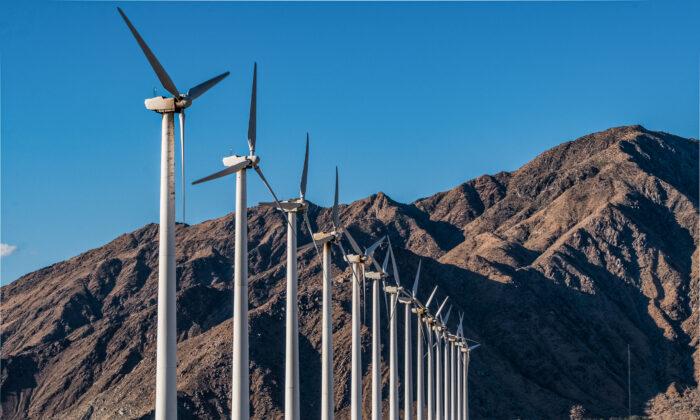A new study by German scientists has found that populations of a group of aquatic birds known as red-throated loons or “divers” have declined by more than 90 percent in the North Sea after offshore wind farms were built there.
The study authors noted that “wind energy, specifically the installation of offshore wind farms (OWFs), has made a substantial contribution to renewable energy production in recent decades, with the North Sea currently being the key area for OWFs worldwide.”
Researchers set out to analyze multiple data sources to quantify the effects of such wind farms on seabirds from the family Gaviidae (loons) in the German North Sea.
The scientists used data collected from ships, aircraft, and digital aerial surveys collected between 2000 and 2017 that were harmonized and combined for joint analysis to examine changes in populations of loons after the wind farms were built.
‘Negative Effects on Population Trends’
Total population estimates for all wind farm clusters (multiple OWF sites in direct vicinity) declined by almost a third, from 34,865 individuals before construction to 24,672 individuals after they were built, researchers found.“The observed redistribution was a large-scale effect, with birds aggregating within the study area at large distances from the OWFs,” the study authors noted. “Although renewable energies will be needed to provide a large share of our energy demands in the future, it is necessary to minimize the costs in terms of less-adaptable species, to avoid amplifying the biodiversity crisis.”
The study authors noted that it is difficult to establish what the population consequences are for the loons or how the displacement will affect individuals and populations.
“Nevertheless, reduced availability of prime habitat and the consequently inferior foraging options may represent risks for loon populations through reduced body condition, delayed departure to breeding areas, and lower reproductive success, with negative effects on population trends,” they wrote.
Dead Whales Washing Up
The latest findings come as an increased number of whales have washed up dead on the U.S. east coast in recent months, prompting a group of mayors in the state of New Jersey to call for an immediate moratorium on offshore wind farms in the area until federal and state agencies can investigate the deaths and “confidently determine” that offshore wind activities are not contributing to them.As more and more countries are turning to renewable forms of energy and phasing out fossil fuels, an increased number of wind farms are propping up.
Over sixty countries now generate more than 10 percent of their electricity from wind and solar, according to the report.
The study authors said further research is needed to help understand which marine waters are best suited for establishing offshore wind farms without sacrificing species-conservation targets and that decision to construct such farms should take into account the existing biodiversity crisis.
“This would provide a kind of compromise between renewable energy installation and prevention of biodiversity loss,” Garthe said.





